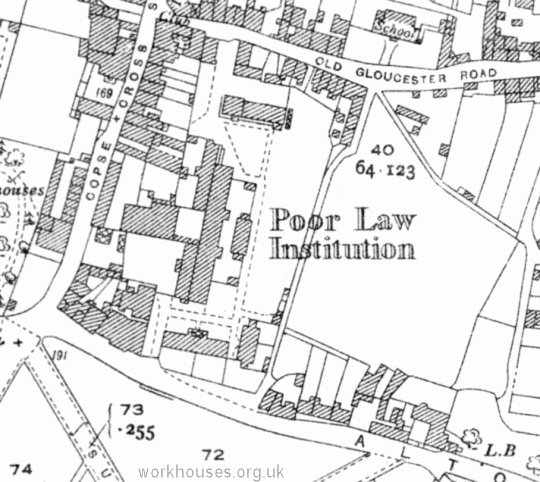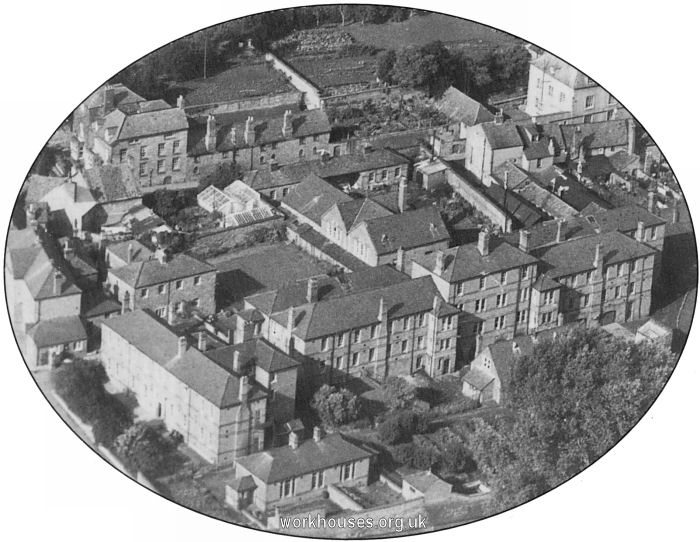Ross, Herefordshire
Up to 1834
In 1728, land on Dean Hill, with access to Corpse Cross Street (now Copse Cross Street, SO600239), was bequeathed to the parish of Ross. A workhouse was subsequently erected on the site and in 1777 could accommodate up to 100 inmates.
Bridstow had a workhouse by 1799, Ruardean by 1802-3, and Weston-under-Penyard by 1814.
In July 1811, 'a large dwelling-house, now used as a work-house, with a garden adjoining', at Hoarwithy, in the parish of Hentland, was put up for sale by auction.
Workhouses also existed Upton Crews, Goodrich, Haentland, Llangarron and Peterstow.
After 1834
Ross Poor Law Union was formed on 12th April 1836. Its operation was overseen by an elected Board of Guardians, 34 in number, representing its 29 constituent parishes as listed below (figures in brackets indicate numbers of Guardians if more than one):
County of Hereford:
Ballingham, Brampton Abbots, Bridstow, Brockhampton, Foy, Goodrich, Harewood, Hentland, Hope Mansell, How Caple, King's Caple, Lea (part of), Llandinabo, Llangarren (or Llangarron) (2), Llanwarne, Marstow, Pencoyd, Peterstow, Ross (4), Sellack, Sollers Hope, Tretire with Michaelchurch, Walford (2), Weston under Penyard, St Weonards, Upton Bishop, Yatton.
County of Gloucester: Lea (part of), Lea Bailey Hamlet. The parish of Ruardean was added on 23 November 1836.
The population falling within the union at the 1831 census had been 11,973 with parishes ranging in size from Llandinabo (population 53) to Ross itself (3,078). The average annual poor-rate expenditure for the period 1834-36 had been £6,054 or 9s.6d. per head of the population.
A new union workhouse was built in 1836-7 adjacent to the site of the existing parish workhouse on Alton Street at the south of Ross. It was designed by John Plowman.
By the 1860s, the premises were proving increasingly cramped and the workhouse was rebuilt in 1872-3. The new buildings were designed by Messrs Hadden Brothers of Hereford. The main block was based on a corridor plan which was the most popular design at that time. It was of three storeys, with the master's quarters at the centre, men's and boys accommodation at the north, and women's and girls at the south. To the west of the main block stood the workhouse's dining hall, kitchens and laundry. A casual ward lay at the north, and contained both sleeping cells and labour cells where stone-breaking was performed. A children's playground and single-storey school-room also stood to the west of the main block. The entrance on Alton Street was flanked by an infirmary and fever wards at the east, and administrative offices and receiving wards at the west. The infirmary was of two storeys with a central section containing nurses's rooms and stairs, with a wing for males to the west and females to the east. A separate fever block stood to the east of the infirmary. The administrative block contained the Guardians' board room, clerk's office and waiting room for relief applicants. The workhouse location and layout are shown on the 1927 map below.

Ross workhouse site, 1927.

Ross workhouse aerial view from the south-east.

Former Ross workhouse administration block from the south, 2001.
© Peter Higginbotham.
The workhouse later became Ross Poor Law Institution and more recently Dean Hill Hospital. Almost all the old buildings were demolished with the building of the Ross Community Hospital on the site in 1997.
Staff
Inmates
Records
Note: many repositories impose a closure period of up to 100 years for records identifying individuals. Before travelling a long distance, always check that the records you want to consult will be available.
- Herefordshire Archives and Record Centre, Fir Tree Lane, Hereford HR2 6LA. Very few records survive — Relief order books (1915-24); etc.
Bibliography
- Higginbotham, Peter The Workhouse Encyclopedia (2014, The History Press)
Links
- None.
Unless otherwise indicated, this page () is copyright Peter Higginbotham. Contents may not be reproduced without permission.


